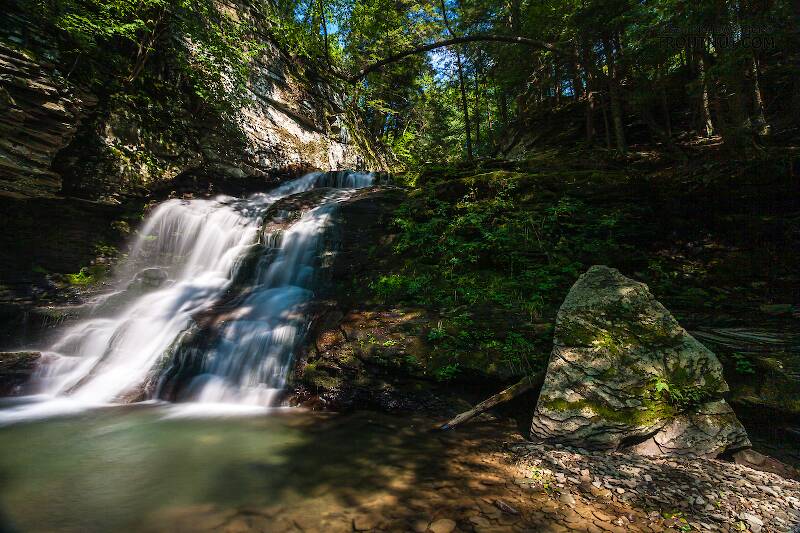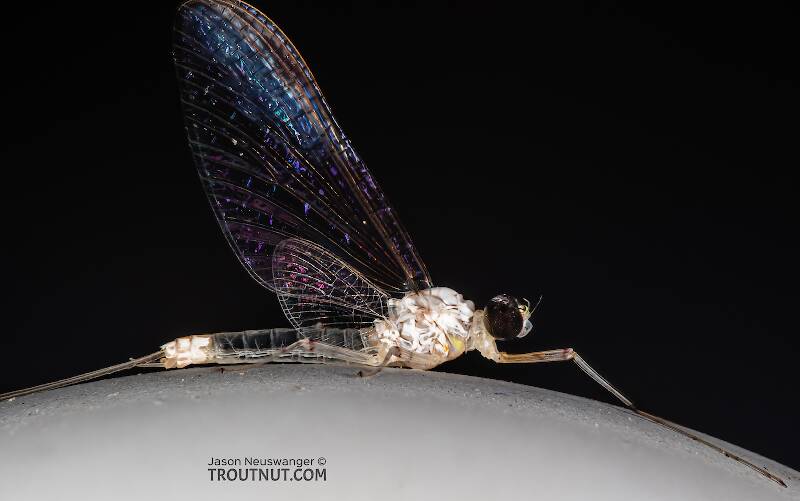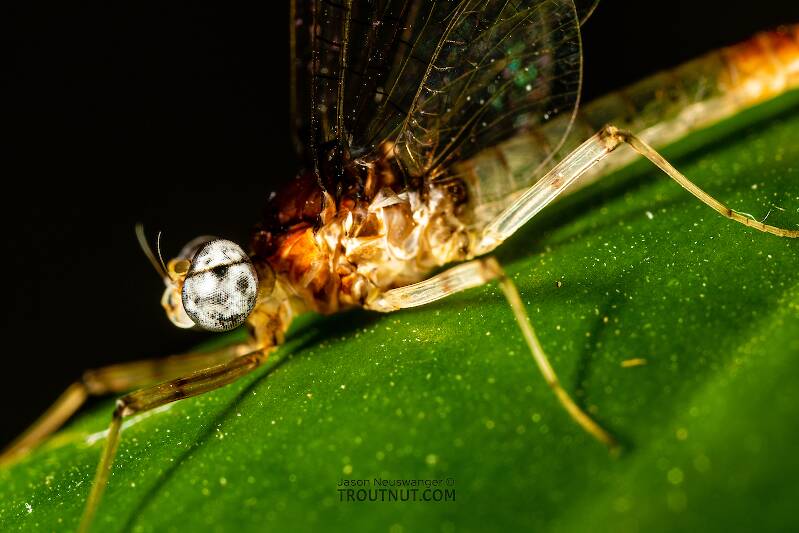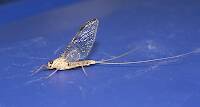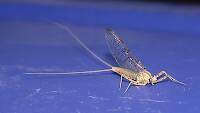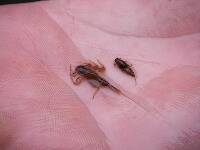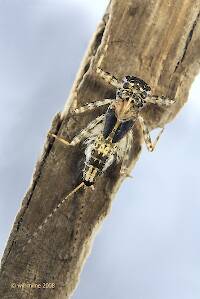
Blue-winged Olives
Baetis
Tiny Baetis mayflies are perhaps the most commonly encountered and imitated by anglers on all American trout streams due to their great abundance, widespread distribution, and trout-friendly emergence habits.
Featured on the forum

This wild-looking little thing completely puzzled me. At first I was thinking beetle or month larva, until I got a look at the pictures on the computer screen. I made a couple of incorrect guesses before entomologist Greg Courtney pointed me in the right direction with Psychodidae. He suggested a possible genus of Thornburghiella, but could not rule out some other members of the tribe Pericomini.

Troutnut is a project started in 2003 by salmonid ecologist Jason "Troutnut" Neuswanger to help anglers and
fly tyers unabashedly embrace the entomological side of the sport. Learn more about Troutnut or
support the project for an enhanced experience here.
This topic is about the Mayfly Genus Stenonema
Many of America's traditional flies, like the March Brown and the Light and Dark Cahills, originated in the Catskills to imitate the mayflies of this genus. Caucci and Nastasi wrote of them in Hatches II:"There is a matrimony between Stenonema flies and Catskill rivers that is as synonymous as ham and eggs."
By far the most important species is Stenonema vicarium, variants of which are known to anglers as the March Brown and Gray Fox. Of the others in the "Cahill" group, Stenonema ithaca is the next most important, along with Stenonema modestum and Stenonema pulchellum, which also produce localized fishable hatches. These lesser species together with a few species of Stenacron and the Stenonema femoratum represent the sporadic Light Cahill hatches on evenings in late Spring that often continue throughout the Summer.
Example specimens
Entoman on May 21, 2012May 21st, 2012, 8:03 am EDT
Thanks Jeff, for the excellent photo and determination. Readers note that besides the three spots that are clearly seen, spots are also just visible on seg's 3 and 8. The dark transverse dashes are a little harder to make out, but they look to be present as well. The crowded crossveins below the bulla are also indicative of femoratum. This is the last Stenonema species left in what is now the least important genus (to anglers) of the related group. See the genus topic article as well as the family article in the hatch encyclopedia for a brief explanation.
"It's not that I find fishing so important, it's just that I find all other endeavors of Man equally unimportant... And not nearly as much fun!" Robert Traver, Anatomy of a Fisherman
Jmw975 on May 21, 2012May 21st, 2012, 10:24 am EDT
Thanks. Did I post this in the right place? I was hoping to have it show up under the species in the aquatic insect encyclopedia.
Here's a lateral shot of another male specimen: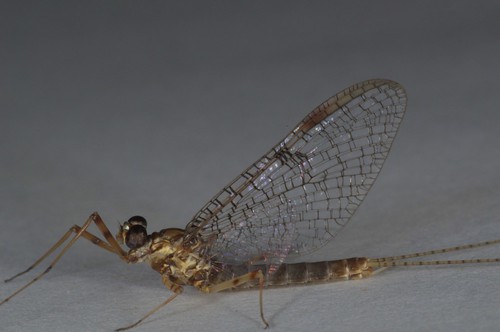
Between the two photos you can clearly see the crowded crossveins in the bulla and the three transverse spots/dashes on the abdominal terga.
A preserved nymph showing the highly distinctive sternal colour pattern:
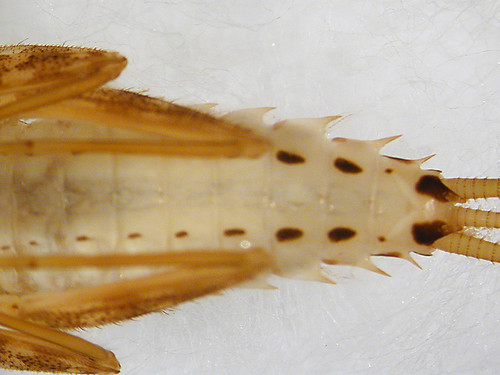 .
.
and now I'm going fishin' :)
Jeff
Here's a lateral shot of another male specimen:

Between the two photos you can clearly see the crowded crossveins in the bulla and the three transverse spots/dashes on the abdominal terga.
A preserved nymph showing the highly distinctive sternal colour pattern:
 .
.and now I'm going fishin' :)
Jeff
Entoman on May 21, 2012May 21st, 2012, 10:43 am EDT
Thanks for the ventral! They're hard to find and much easier to work with than descriptions. BTW, you posted in the right place. See PM just sent.
"It's not that I find fishing so important, it's just that I find all other endeavors of Man equally unimportant... And not nearly as much fun!" Robert Traver, Anatomy of a Fisherman
Quick Reply
Related Discussions
Topic
Replies
Last Reply
2
Jul 14, 2008
by Wiflyfisher
by Wiflyfisher

